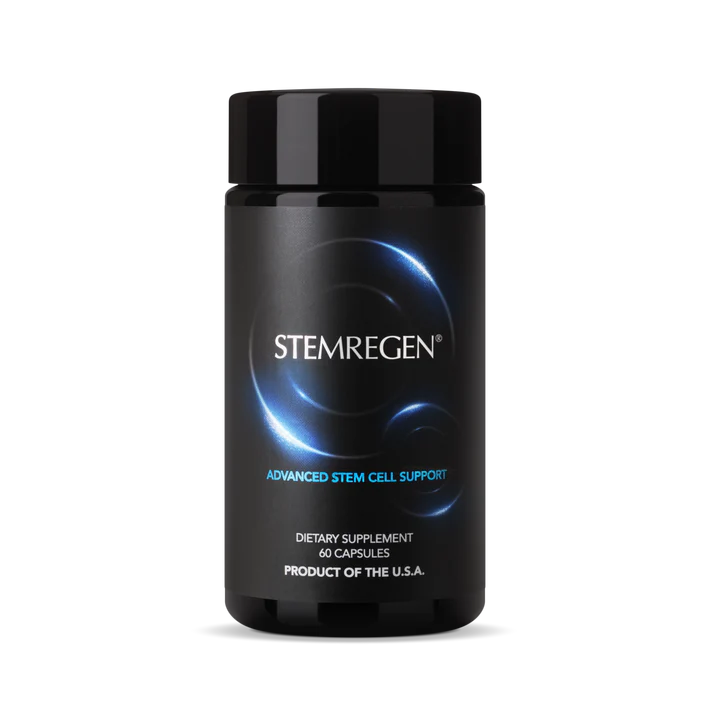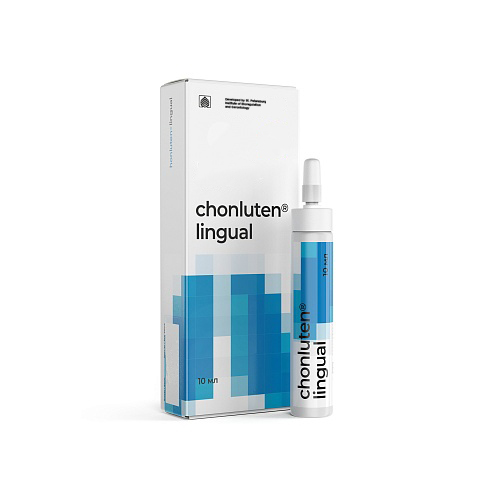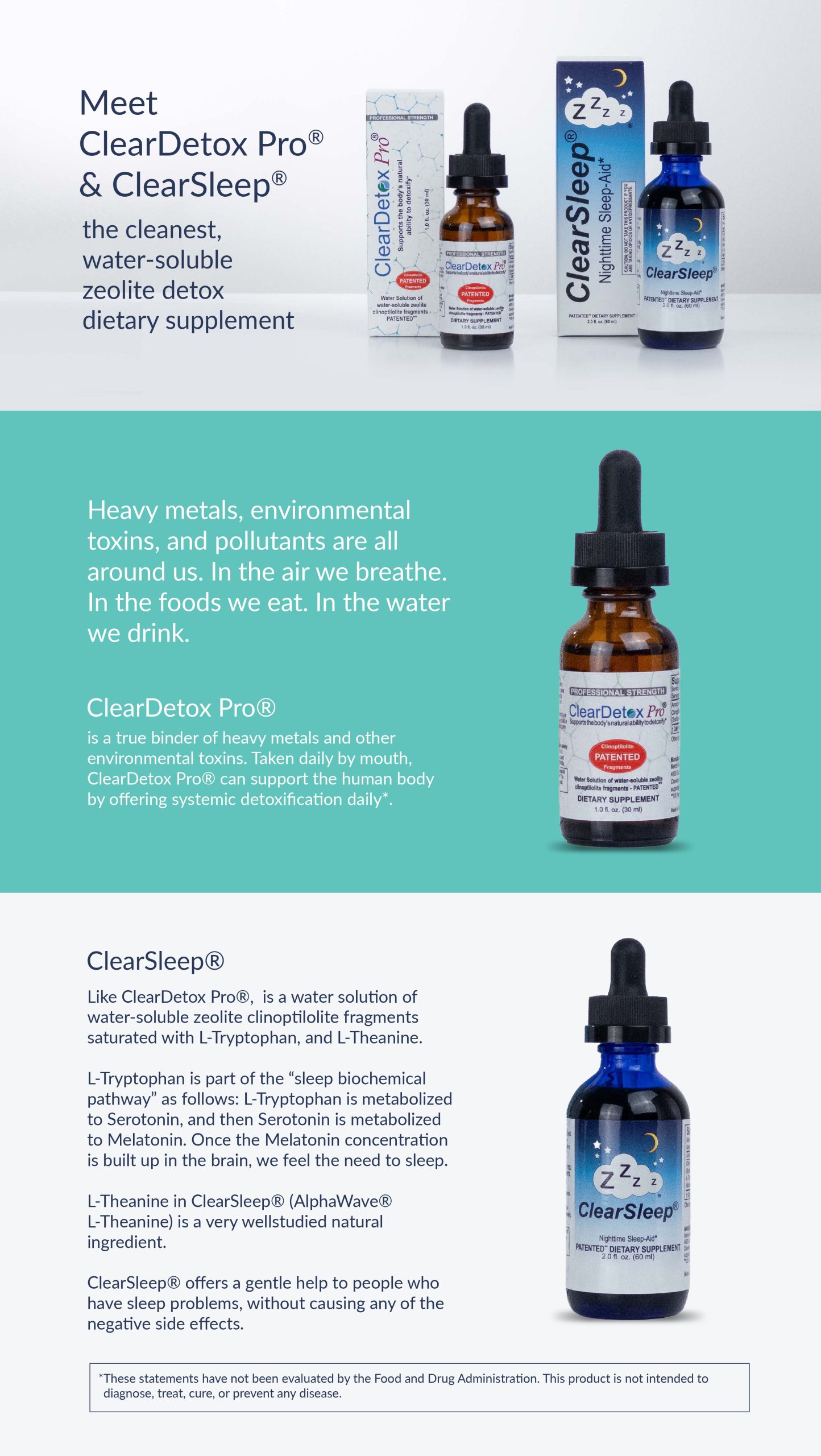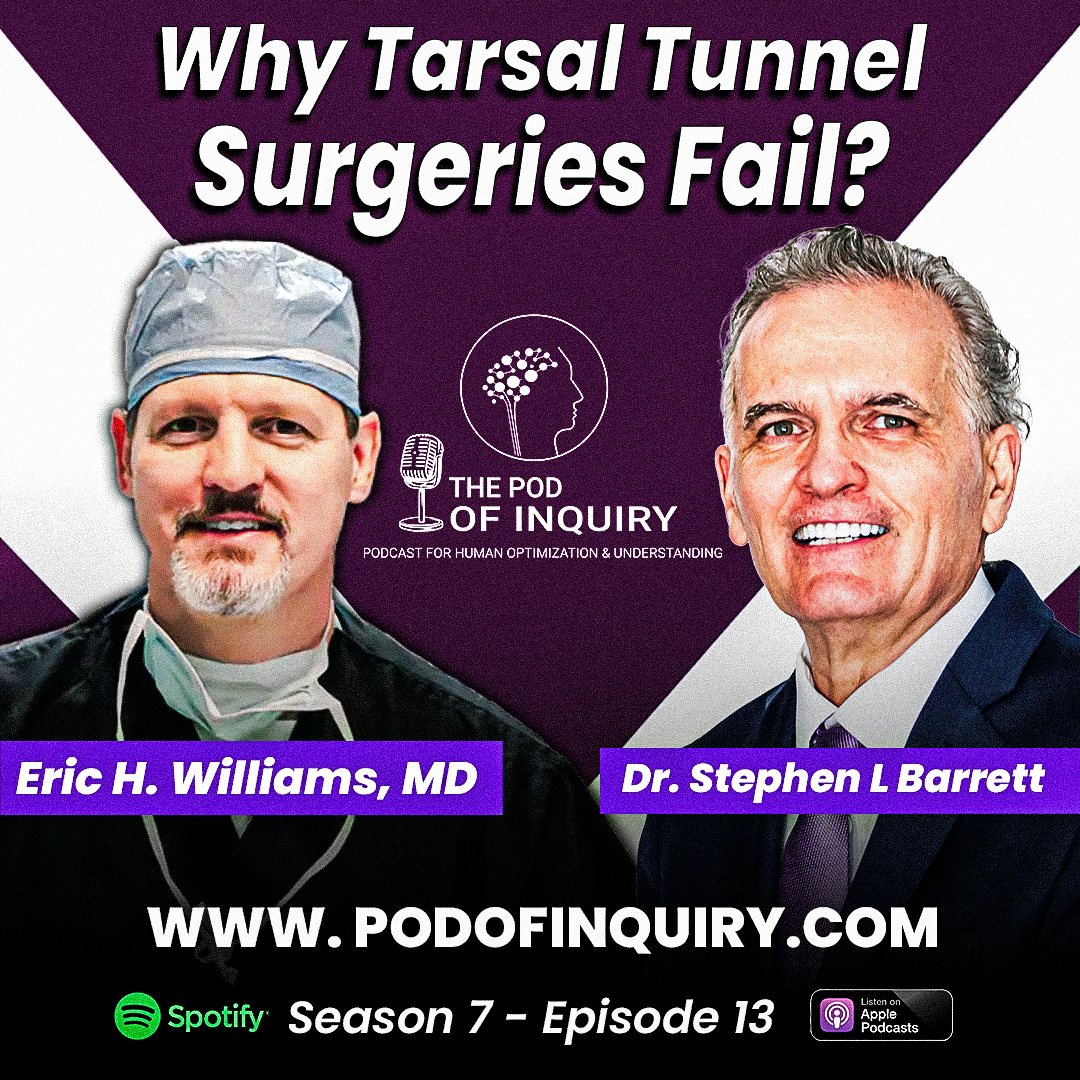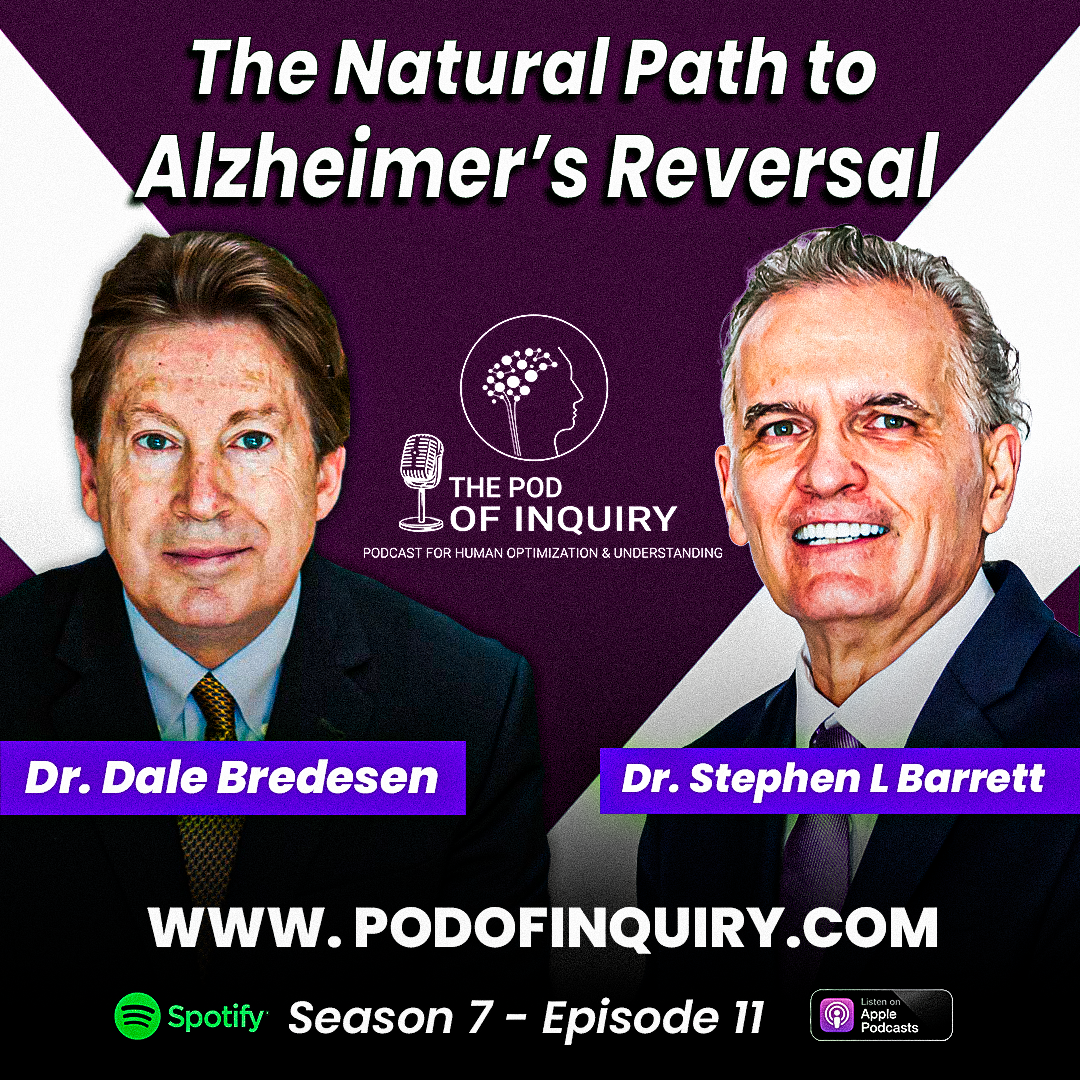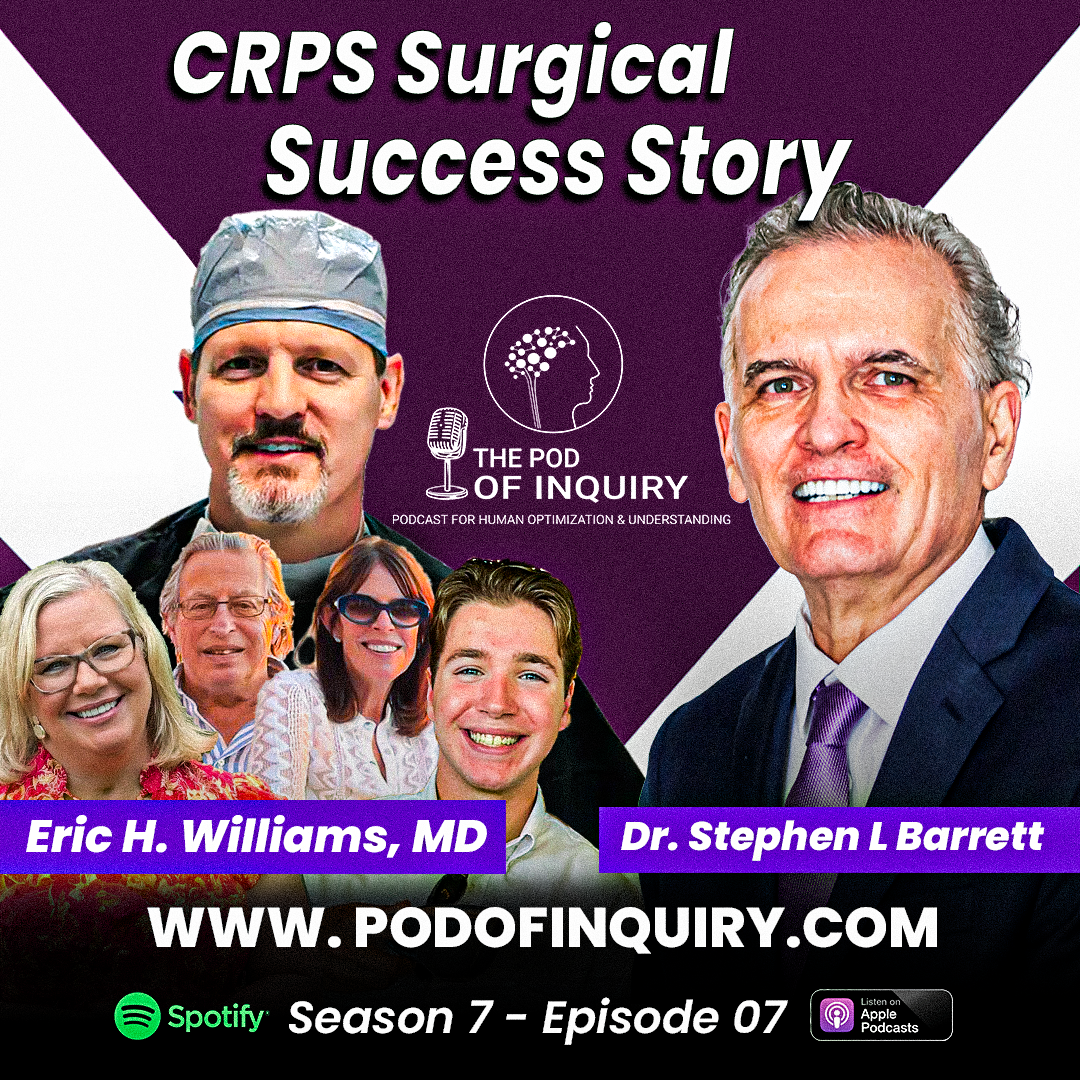Can a nerve regenerate without surgery?
This case suggests yes.
In this episode of Pod of Inquiry, Dr. Stephen Barrett sits down with Dr. Erin Nelson to review a rare EMG-documented case of nerve regeneration after ultrasound-guided Hydrodissection with D5W — no scalpel required. (D5W Nerve Repair Proven by EMG!)
A 56-year-old woman developed sudden foot drop due to deep peroneal nerve entrapment. After two D5W Hydrodissection sessions, a 4-month repeat EMG showed significant interval improvement in demyelination + axonal injury. Objective. Measurable. Independent neurologist confirmed.
What You’ll Learn in This Episode:
- Why 5% dextrose (D5W) outperforms saline in Hydrodissection
- The exact protocol Dr. Nelson uses (volume, frequency, technique)
- •When to choose Hydrodissection vs. surgical decompression
- Implications for patients with diabetic neuropathy
- The difference between glucose puncture vs Hydrodissection
This may become one of the most important clinical conversations in the nerve pain / peripheral neuropathy space.
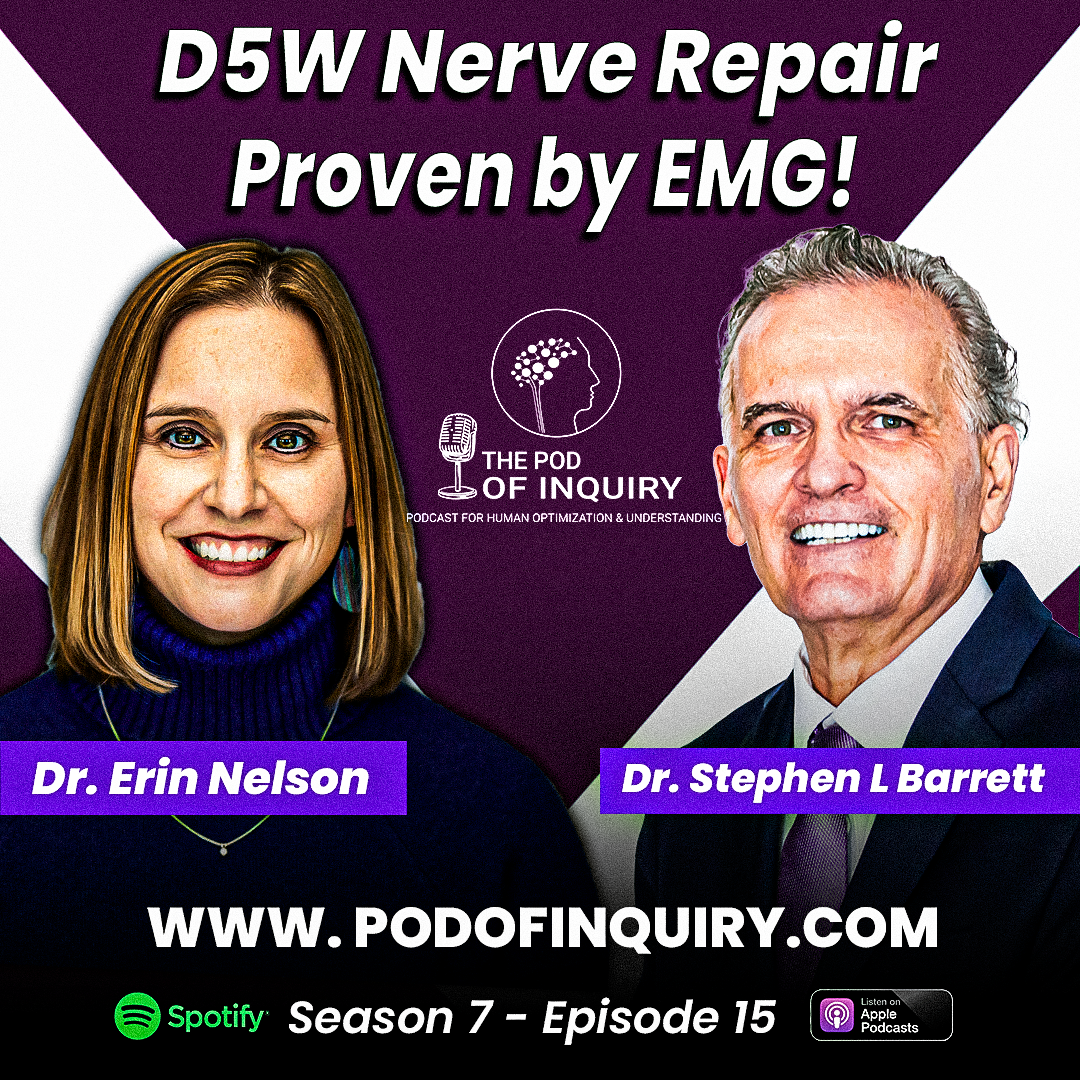
Watch The Podcast
Listen to The Podcast
Also available on
Guest Biography

Erin Nelson, DPM, FACFAS, FAENS, CWSP
Erin Nelson, DPM, FACFAS, FAENS, CWSP is the founder of Foot and Ankle Specialists of Ames. She is a lifelong Iowan and after completing a residency at St John North Shores in Harrison Township, Michigan she and her family returned to Iowa. Dr. Nelson is board certified in foot and ankle surgery and wound care. She is a fellow of Association of Extremity Nerve Surgeons. She loves cheering for the Iowa State Cyclones and Packers. In her free time, she enjoys spending time with her husband and two kids as well as staying active including participating in triathlons and finding new places for vacations!
Show Notes from this episode
00:00 – Introduction
Dr. Stephen Barrett introduces guest Dr. Erin Nelson, a lower extremity peripheral nerve surgeon from Ames, Iowa, to discuss hydrodissection and its neurophysiological effects on nerve improvement.
00:52 – Opening & Welcome
Podcast opening and introduction to the episode’s focus on hydrodissection with D5W (5% dextrose in water).
02:39 – What is Hydrodissection?
Dr. Nelson explains hydrodissection as injecting 5% dextrose around entrapped nerves under ultrasound guidance to relieve pressure, provide cellular energy, and allow nerve healing.
04:03 – Why D5W Over Other Solutions?
Discussion of why 5% dextrose is preferred over saline or local anesthetics – it addresses glycopenia (glucose deficiency) at nerve entrapment sites and provides metabolic support beyond just mechanical separation.
05:33 – Safety in Diabetic Patients
Confirmation that D5W hydrodissection is safe for diabetic patients and doesn’t cause blood sugar spikes, even with 30-60cc volumes.
07:12 – Safety Profile & Substance P
Discussion of D5W’s superior safety profile compared to steroids and its effect on Substance P, a pain mediator.
07:50 – Glucose Puncture vs Hydrodissection
Dr. Nelson distinguishes between glucose puncture (fascial injections in localized pain areas) and hydrodissection (nerve-specific treatment requiring ultrasound expertise).
09:48 – Case Presentation Begins
Introduction to a compelling case showing objective EMG improvement after hydrodissection.
10:00 – Patient History
56-year-old diabetic patient presenting with sudden right foot drop (6 weeks duration), history of numbness, controlled diabetes (A1C 6.2), chronic back/neck pain, hypothyroidism, and 100-pound weight loss.
13:47 – Prior Upper Extremity Surgeries
Patient had previous carpal tunnel and cubital tunnel releases but continued experiencing upper extremity weakness – important prognostic indicator discussed.
17:09 – EMG Findings
Patient’s second EMG showed deep peroneal nerve entrapment at the fibular head with evidence of demyelination and axonal involvement.
18:17 – Weight Loss Connection
Discussion of literature showing common peroneal nerve entrapments after significant weight loss/gastric bypass – possible mechanism involving loss of adipose padding.
19:24 – Physical Examination
Initial exam showed symptomatic common peroneal nerve, weak dorsiflexion, EHL (extensor hallucis longus) strength 2/5, and decreased sensation.
22:59 – First Hydrodissection
Performed at common peroneal nerve with approximately 10cc D5W under ultrasound guidance.
23:03 – One Month Follow-up
Patient 25% improved, walking better without dragging foot, but developed new symptoms at superficial peroneal nerve and dorsal foot.
23:16 – Second Hydrodissection
Three and a half months after first procedure – treated all three entrapment points (common, superficial, and deep peroneal nerves).
25:45 – Critical Finding: EMG Improvement
Four months after second hydrodissection, third EMG showed “significant interval improvement” with improving evidence of demyelination and axonal loss – objective demonstration of nerve regeneration.
26:33 – Significance of Objective Findings
Dr. Barrett emphasizes this as demonstrative evidence of nerve regeneration following hydrodissection intervention.
27:06 – Current Status
Patient improved balance, no longer tripping, dorsiflexion and EHL strength improved, though engages slowly. Residual numbness persists but non-painful.
30:19 – Common Causes of Nerve Entrapment
Sports injuries, osteophytes, Ehlers-Danlos Syndrome (EDS), hypermobility, surgery/scarring, joint replacements, direct trauma, and altered gait patterns.
31:48 – Hydrodissection Mechanism Review
Summary of how D5W alleviates pressure, promotes healing through glucose delivery, restores vasa nervorum (nerve blood supply) and nervi nervorum (nerve to the nerve).
33:20 – Patient Experience
Procedure is comfortable with temporary pressure sensation; patients often report immediate improvement.
34:41 – Future Considerations
Discussion of potentially combining glucose puncture between hydrodissection sessions and using hydrodissection as preparation for potential surgery.
36:39 – Conservative Approach Benefits
Even 50% success rate with hydrodissection represents significant win as benign, safe intervention before considering surgery.
39:39 – Residual Symptoms & Central Sensitization
Discussion of study showing 100% EMG improvement after tarsal tunnel surgery but significant percentage with persistent pain – attributed to centralized pain mechanisms rather than surgical failure.
41:04 – Complexity of Treatment
Recognition that peripheral nerve issues are often multifactorial; addressing primary pain generators may allow body to recover from secondary issues over time.
42:17 – Contact Information
Dr. Nelson practices at Foot and Ankle Specialists of Ames, Iowa
- Website: FAS-ames.com
- Email: info@FAS-ames.com
Sponsors Of The Episode
Approved Medical Solutions
Your source for Oxalate free Nitric Oxide Supplementation
Non-licensed patients can use code “sbarrett” for a 10% discount.
Licensed practitioners can access the discounts by registering and when at checkout put “podofinquiry” (no space and not case sensitive) in the coupon section.
Ketone
Nitric Oxide


